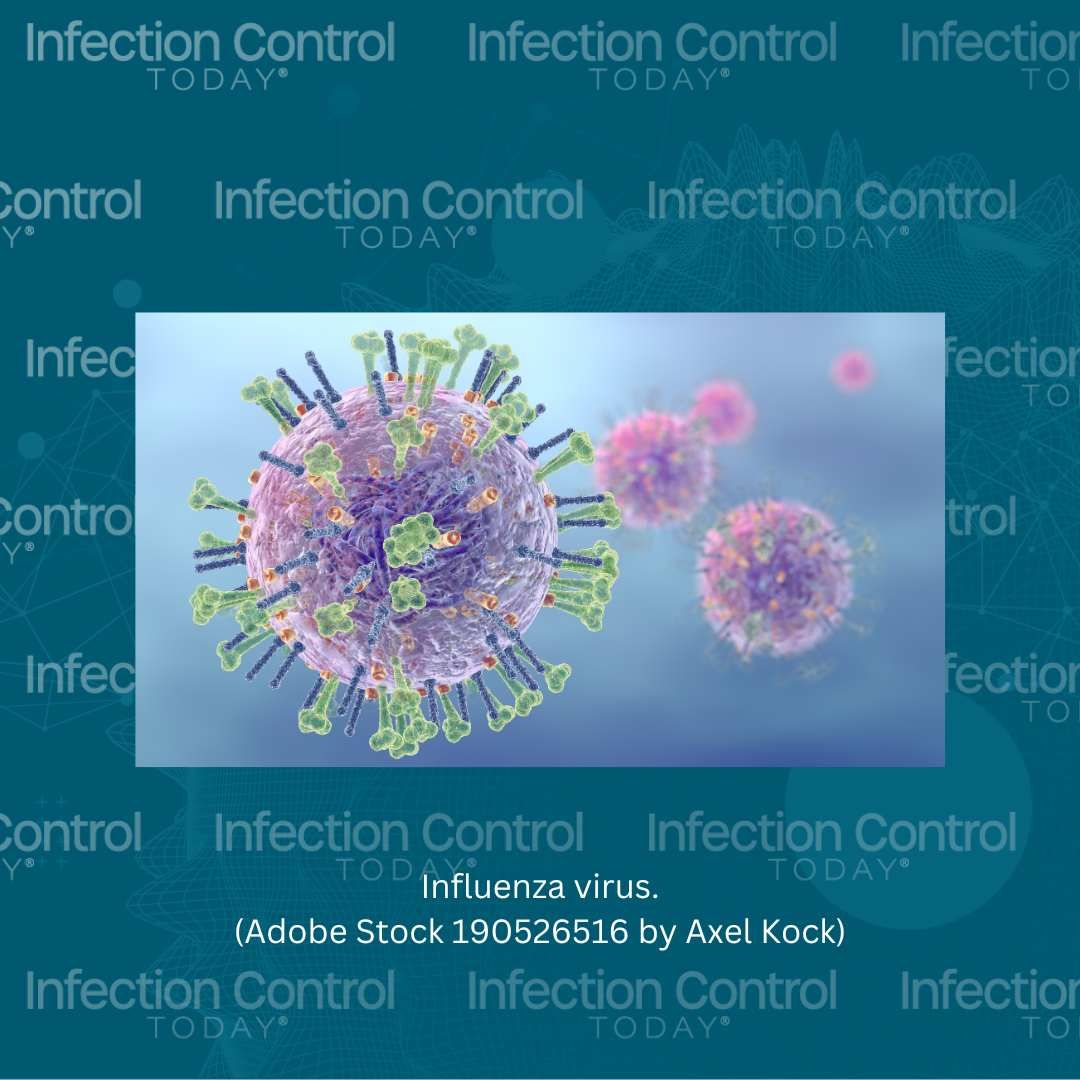CSL Seqirus Transitions to Trivalent Influenza Vaccines: Insights From Chief Health Officer Gregg Sylvester, MD
Discover the considerations behind CSL Seqirus' shift to trivalent influenza vaccines, removing B/Yamagata strain. Gregg Sylvester, MD, MPH, explains the impact on effectiveness and steps for a seamless transition in health care facilities.
Influenza virus
(Adobe Stock 190526516 by Axel Kock)

As we navigate the complexities of influenza prevention amidst the ongoing challenges posed by the COVID-19 pandemic, the significance of vaccines in curbing the spread of influenza cannot be overstated.
While practices such as hand hygiene and covering coughs and sneezes remain crucial, vaccines play a pivotal role in bolstering our defenses against seasonal influenza.
In a recent interview with Gregg Sylvester, MD, MPH, chief health officer and vice president of medical affairs at CSL Seqirus, Infection Control Today® (ICT®) discusses the considerations behind the decision to transition from quadrivalent to trivalent influenza vaccines for the upcoming US influenza season.
ICT: What considerations led to the decision to transition from quadrivalent to trivalent influenza vaccines for the upcoming US influenza season?
Gregg Sylvester, MD, MPH, chief health officer and vice president of medical affairs of CSL Seqirus: The World Health Organization's (WHO) comprehensive surveillance system for tracking influenza virus activity detected a decline in B/Yamagata circulation before the onset of the COVID-19 pandemic. Subsequently, the WHO confirmed that no circulation of B/Yamagata lineage viruses had been detected since March 2020.
Considerations leading up to the decision to transition to trivalent included the epidemiology and characteristics of the B/Yamagata strain itself. B/Yamagata has shown a slower mutation rate than other influenza virus strains, tended to appear in more temperate climates, and had already been in decline before the onset of the COVID-19 pandemic.
In February 2024, the WHO reinforced its recommendation that B/Yamagata lineage antigen should be excluded from seasonal influenza vaccines when they made their recommendation for the composition of influenza vaccines for use in the 2024-25 Northern Hemisphere influenza season.
ICT: How does removing the B/Yamagata strain impact the effectiveness of the upcoming trivalent influenza vaccines?
GS: With B/Yamagata no longer detected in circulation, this formulation transition will not impact vaccine effectiveness. Instead, it will deliver vaccines developed to match projected circulating strains based on annual guidance by the FDA in collaboration with several global regulatory bodies.
ICT: Could you explain the process of transitioning the entire portfolio of seasonal influenza vaccines to trivalent formulations?
GS: CSL Seqirus worked closely with the FDA during 2023 to develop plans and agreed on a path forward, which was finalized in December, to remove the B/Yamagata antigen from the influenza vaccine formulation and convert the full US seasonal influenza vaccine portfolio.
As a result of this effort and our swift response to meet the FDA's directive, CSL Seqirus received FDA approval on March 4, 2024, for all of its US trivalent influenza vaccines.
ICT: What steps is CSL Seqirus taking to ensure a smooth transition for health care facilities and providers administering these vaccines?
GS: Understanding the critical role health care providers play in public health, we've proactively communicated these changes to ensure a seamless transition. It's our commitment to keep our partners well-informed, so together we can help safeguard our communities against influenza and its complications.
ICT: Considering this change, what advice do you have for health care professionals to prepare for the 2024-2025 influenza season and optimize influenza vaccination efforts?
GS: As we approach the 2024-2025 flu season, it’s more important than ever to focus on thoughtful education about influenza vaccination. By ramping up education efforts on the importance of influenza vaccination, we strive to increase immunization rates and vaccine confidence to improve public health and alleviate the burden on health care systems.
Show, Tell, Teach: Elevating EVS Training Through Cognitive Science and Performance Coaching
April 25th 2025Training EVS workers for hygiene excellence demands more than manuals—it requires active engagement, motor skills coaching, and teach-back techniques to reduce HAIs and improve patient outcomes.
The Rise of Disposable Products in Health Care Cleaning and Linens
April 25th 2025Health care-associated infections are driving a shift toward disposable microfiber cloths, mop pads, and curtains—offering infection prevention, regulatory compliance, and operational efficiency in one-time-use solutions.
Phage Therapy’s Future: Tackling Antimicrobial Resistance With Precision Viruses
April 24th 2025Bacteriophage therapy presents a promising alternative to antibiotics, especially as antimicrobial resistance continues to increase. Dr. Ran Nir-Paz discusses its potential, challenges, and future applications in this technology.